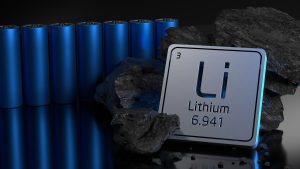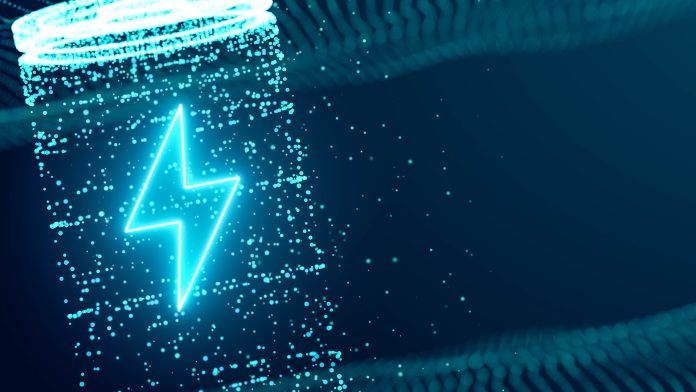With an ever-increasing demand for lithium batteries, Go2Lithium is harnessing connections and new extraction technology to help fulfil demands and bring a sustainable future closer than ever.
Go2Lithium Inc. (G2L) is a 50/50 joint venture between two companies with complementary technical skills, Clean TeQ Water Pty Ltd (ASX:CNQ) and Computational Geosciences Inc., a subsidiary of Ivanhoe Electric Inc (TSX:IE). Clean TeQ has operated in the metals recovery sector for over 25 years, utilising its proprietary continuous ion exchange technologies. The technology has been proven to deliver superior outcomes that support its use in recovering energy metals. Computational Geosciences is a cutting-edge technology company that harnesses the power of computational methods to advance geoscience, seamlessly integrating computer science, data analytics, and geophysical principles to provide unparalleled solutions for understanding and navigating the complexities of the Earth’s subsurface. This unique multi-disciplinary venture is perfectly designed to aid in discovering and recovering lithium from subsurface brines.
G2L’s work
Lithium extraction from brines is vital in lithium production, an essential element in rechargeable batteries that power various electronic devices and electric vehicles. Brine deposits, often located in salt flats or salars, represent a substantial lithium source because of their elevated lithium content. Geopolitical dynamics are driving a shift towards recovering lithium from North American brines, despite their comparatively lower lithium concentrations.
Lithium holds a crucial status both in North America and worldwide, being classified as a critical material. It is vital in the composition of lithium batteries utilised in electric vehicles, powering our computers and smartphones and increasingly in energy storage systems and electric grid reliability technologies.
As mentioned earlier, the escalating demand for lithium is intrinsic to fostering technological progress. Tapping into the lithium reserves in the Canadian region is pivotal for securing a sustainable supply for the Northern American states. This endeavour fortifies the local and national economy by generating employment opportunities, supporting domestic manufacturing, and enhancing national security.
Lithium extraction from brines is more cost-effective and environmentally friendly than extracting lithium from hard rock minerals. However, challenges such as brine chemistry variations and environmental concerns related to water usage and brine disposal need to be carefully addressed to ensure sustainable lithium production. Advances in technology and ongoing research aim to optimise the efficiency of lithium extraction from brines and support the growth of these challenging brines. G2L utilises Clean TeQ’s and Computational Geosciences’ extensive practical experience to produce an attractive outcome.
Key hurdles
DLE represents a relatively novel technology that necessitates successful demonstration and scaling. G2L leverages the vast expertise of Clean TeQ to address numerous associated challenges. The principles of continuous ion exchange and adsorption, validated over decades in industries like uranium and gold, underpin our approach. By drawing upon this wealth of knowledge, the application of DLE within this process can be substantially de-risked.
When it comes to brines, challenges with direct lithium extraction (DLE) from salar and unconventional brines are common. The key objective is to extract lithium in an environmentally sustainable manner, minimising disruption to the natural environment while reducing both energy consumption and freshwater usage.

The nature of the brine is also a challenge. Challenges may be physical or chemical, depending on the region and source of the brine. Unconventional brines are hot and contain a complex mixture of dissolved salts and petroleum products. These highly salty brines, which are generally more than five times saltier than seawater, have been trapped in the aquifers for hundreds of years in an environment without oxygen, so the chemistries are quite unpredictable. The extraction of 70mg/L lithium in a concentrated salt mixture containing over 200,000mg/L of sodium, potassium, calcium, and magnesium chloride is challenging.
Before the lithium extraction step, the brines must be pre-treated to remove most suspended materials, including particulates and free and emulsified oils. G2L uses continuous direct lithium extraction (cDLE®) to capture the lithium from the brine.
The DLE process is only one of several steps in the extraction and refinery stage. Still, it is the one that upgrades and purifies the lithium, so both pretreatment and refining must be tuned to work optimally.
The importance of lithium
The demand for lithium batteries is pivotal in the journey towards decarbonisation as we transition to renewable energy sources and electrification. Consequently, lithium production needs to prioritise sustainability principles, incorporating benchmarks for carbon dioxide emissions and water usage per tonne of lithium produced as primary considerations.
DLE serves as a crucial step towards realising these principles. The setup of the DLE process plays a significant role in achieving optimal results. Integrating the DLE sorbent with the process is vital for achieving a reduced carbon footprint and freshwater consumption.
G2L employs continuous counter-current processing technology to optimise lithium recovery, enhance sorbent lithium capacity, and minimise impurity carryover, chemistry expenses, and freshwater consumption. These process advantages collectively result in the most economical lifecycle costs and the most negligible environmental impact.
We aim to be the most economical and environmentally sustainable approach to global lithium production from brine resources. We know that this can only be achieved through an integrated process flowsheet.
Key successes and overcoming adversity
The first project for G2L is in partnership with LithiumBank (TSX:LBNK) at their Boardwalk project in Alberta and is proving to be very successful. The Boardwalk property is in west-central Alberta, Canada. The Boardwalk property comprises 30 Alberta Metallic and Industrial Mineral Permits that collectively form a contiguous package of land that totals 231,028 hectares. LithiumBank has 100% ownership of the mineral rights at the Boardwalk property. The mineral resource estimations predict indicated LCE resources of 395,000 tonnes LCE at 71.6 mg/L lithium and inferred LCE resources of 5.734 million tonnes LCE at 68.0% mg/L Li.
The updated Preliminary Economic Assessment by Hatch Inc. for the Boardwalk Lithium Brine Project, dated January 2024, shows a significant difference from the initial PEA released in May 2023. The difference was due to the incorporation of newly licensed continuous Direct Lithium Extraction (cDLE®) technology from G2L. The G2L technology has numerous advantages over the direct lithium extraction process applied in the original PEA, including:
• Increased lithium recovery by 98% using the G2L’s cDLE® technology;
• A significant reduction of 34% in operational expenditures to $4,588 per tonne LHM;
• Reduction in the payback period from 4.1 years to 3.5 years on a pre-tax basis;
• Production of high-grade lithium sulphate (Li2SO4) eluate at a concentration of 3,238 mg/L Li (3.24 g/L Li);
• Lower cost and commercially available reagents used
in the cDLE® process;
• Majority of acid is recovered in the downstream processing and reused in the elution stage; and
• Reduction in freshwater usage using the G2L cDLE®.
The future of G2L
The future of G2L appears promising as it continues to innovate within the lithium extraction industry. With its continuous counter-current processing technology, G2L stands at the forefront of maximising lithium recovery while minimising environmental impact. As the demand for lithium continues to surge in tandem with the global shift towards renewable energy and electrification, G2L’s commitment to sustainability and efficiency positions it as a key player in meeting these evolving needs.
In the coming years, advancements in G2L’s processes and technologies will lead to even greater efficiencies, reduced costs, and improved environmental performance. By staying at the forefront of research and development, G2L can anticipate and adapt to changes in the market, regulatory landscape, and technological innovations, ensuring its continued success and contribution to the sustainable future of lithium extraction.
As the world seeks cleaner energy solutions, G2L’s innovative approach will likely play a crucial role in supporting the transition towards a more sustainable energy ecosystem.
Please note, this article will also appear in the seventeenth edition of our quarterly publication.









